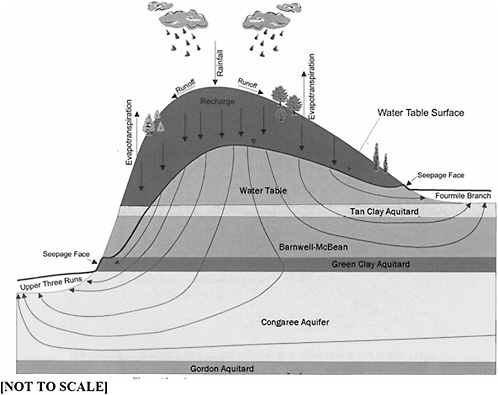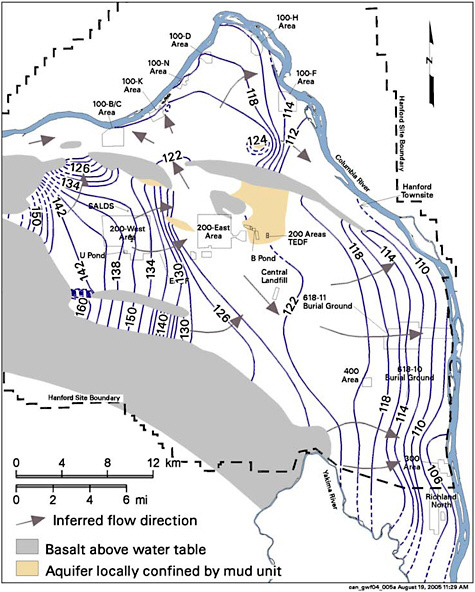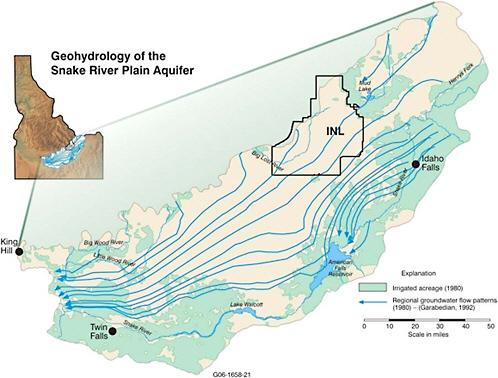Appendix J
Relevant Maps of the Three Sites
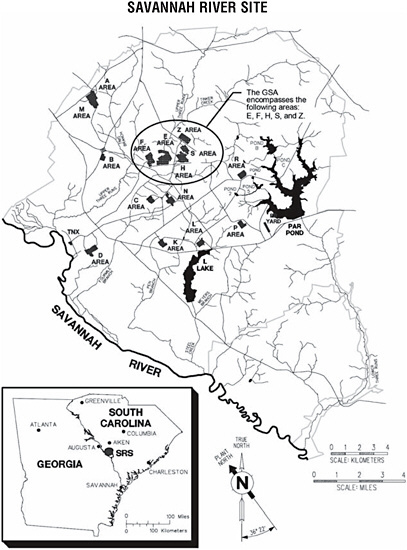
FIGURE J-1 Map of the Savannah River Site. The GSA is the General Separations Area. The area labeled F is the location of the F Canyon and F Tank Farm. E Area includes low-level waste disposal units. H Area is the location of the H Canyon and H Tank Farm. S Area is the Defense Waste Processing Facility. Z Area is the location of the Saltstone Production Facility and Saltstone Vaults. SOURCE: Buice et al., 2005.
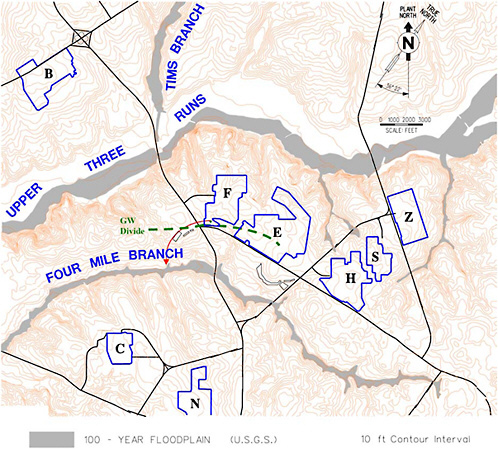
FIGURE J-2 Topographical map of the General Separations Area at the Savannah River Site. The area labeled F is the location of the F Canyon and F Tank Farm. E Area includes low-level waste disposal units. H Area is the location of the H Canyon and H Tank Farm. S Area is the Defense Waste Processing Facility. Z Area is the location of the Saltstone Production Facility and Saltstone Vaults. GW Divide refers to the line that separates groundwater that flows north to Upper Three Runs from groundwater that flows south to Four Mile Branch.
SOURCE: Buice et al., 2005.
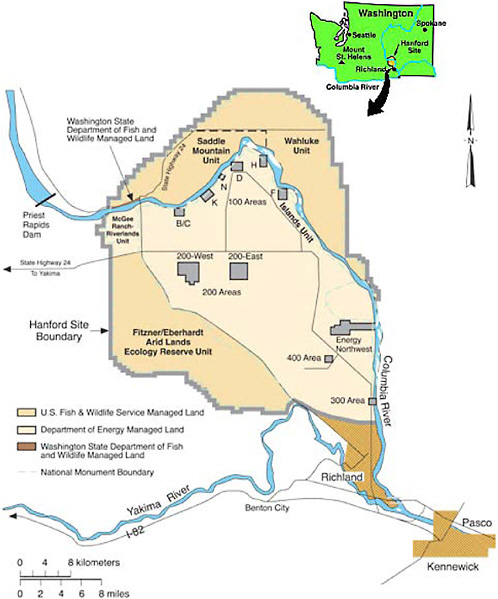
FIGURE J-4 The Hanford Site. SOURCE: Hanford Site, Washington, available at http://www.pnl.gov/ecomon/Hsmap.HTML.
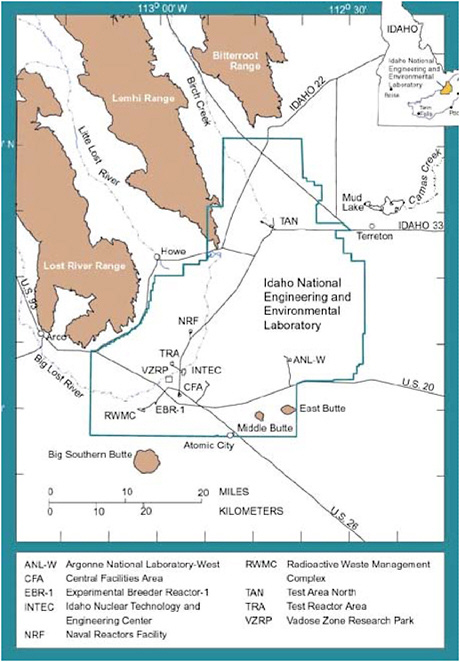
FIGURE J-6 Idaho National Laboratory. Source: United States Geological Service (USGS), Available at http://wwwrcamnl.wr.usgs.gov/uzf/ineelmap.html.

